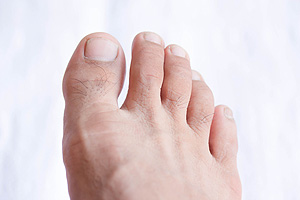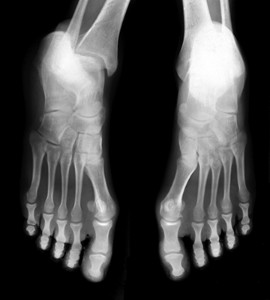 Cracked heels are generally a common condition among those who typically wear open footwear. Besides having a displeasing appearance, cracked heels can also be very uncomfortable and painful for patients who are afflicted with this ailment. Common causes that lead to the development of cracked heels may include standing for the majority of the day, increased pressure on the heels due to obesity, and certain skin conditions such as eczema or athlete’s foot. Along with the pain they may cause, cracked heels that are more severe can also lead to bleeding. It is said one way to help begin the process of healing cracked heels is by drinking plenty of water and remaining hydrated. Applying moisturizers, petroleum jelly, healing cream, and moisturizing socks may also help to reduce the dryness in your heels. Patients have also found soaking their feet, followed by using a pumice stone as an exfoliant, is helpful in treating cracked heels. For more advice on how to best treat cracked heels, please consult with a podiatrist for treatment plans and professional care.
Cracked heels are generally a common condition among those who typically wear open footwear. Besides having a displeasing appearance, cracked heels can also be very uncomfortable and painful for patients who are afflicted with this ailment. Common causes that lead to the development of cracked heels may include standing for the majority of the day, increased pressure on the heels due to obesity, and certain skin conditions such as eczema or athlete’s foot. Along with the pain they may cause, cracked heels that are more severe can also lead to bleeding. It is said one way to help begin the process of healing cracked heels is by drinking plenty of water and remaining hydrated. Applying moisturizers, petroleum jelly, healing cream, and moisturizing socks may also help to reduce the dryness in your heels. Patients have also found soaking their feet, followed by using a pumice stone as an exfoliant, is helpful in treating cracked heels. For more advice on how to best treat cracked heels, please consult with a podiatrist for treatment plans and professional care.
Cracked heels are unsightly and can cause further damage to your shoes and feet. If you have any concerns, contact one of our podiatrists from Westside Podiatry Center, LLP. Our doctors can provide the care you need to keep you pain-free and on your feet.
Cracked Heels
Cracked heels appear unappealing and can make it harder for you walk around in sandals. Aside from looking unpleasant, cracked heels can also tear stockings, socks, and wear out your shoes. There are several methods to help restore a cracked heel and prevent further damage.
How Do You Get Them?
Dry skin is the number one culprit in creating cracked heels. Many athletes, walkers, joggers, and even swimmers suffer from cracked heels. Age and skin oil production play a role to getting cracked heels as well.
Promote Healing
Over the counter medicines can help, especially for those that need instant relief or who suffer from chronic dry feet.
Wear Socks – Wearing socks with medicated creams helps lock in moisture.
Moisturizers – Applying both day and night will help alleviate dryness which causes cracking.
Pumice Stones – These exfoliate and remove dead skin, which allows for smoother moisturizer application and better absorption into the skin.
Change in Diet
Eating healthy with a well-balanced diet will give the skin a fresh and radiant look. Your body responds to the kinds of food you ingest. Omega-3 fatty acids and zinc supplements can also revitalize skin tissue.
Most importantly, seek professional help if unsure how to proceed in treating cracked heels. A podiatrist will help you with any questions or information needed.
If you have any questions, please feel free to contact one of our offices located in Liverpool, Camillus, Skaneateles, Oswego, and Cicero, NY . We offer the newest diagnostic and treatment technologies for all your foot care needs.









